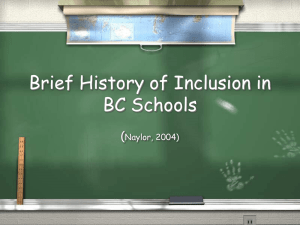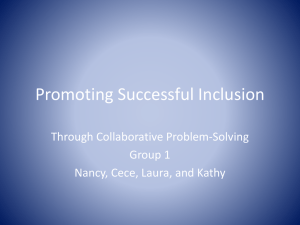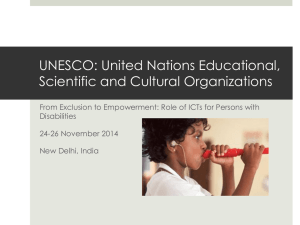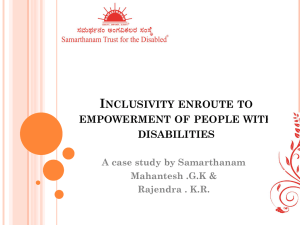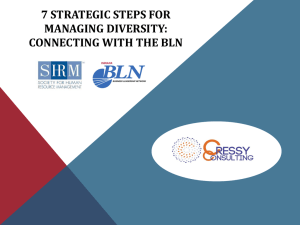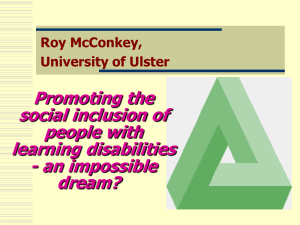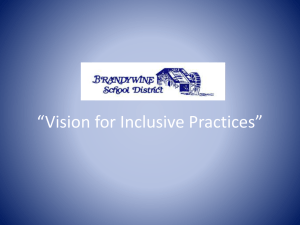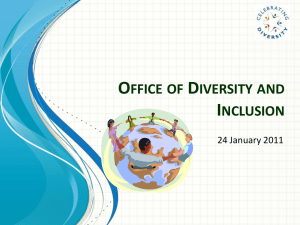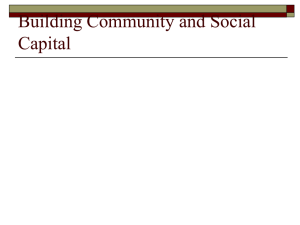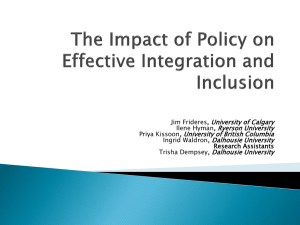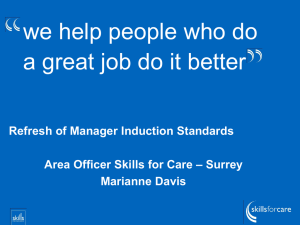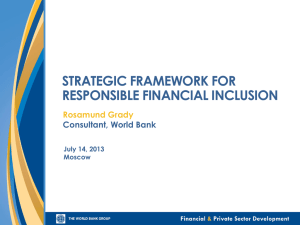Promoting a Culture of Inclusion - Presentation slides
advertisement
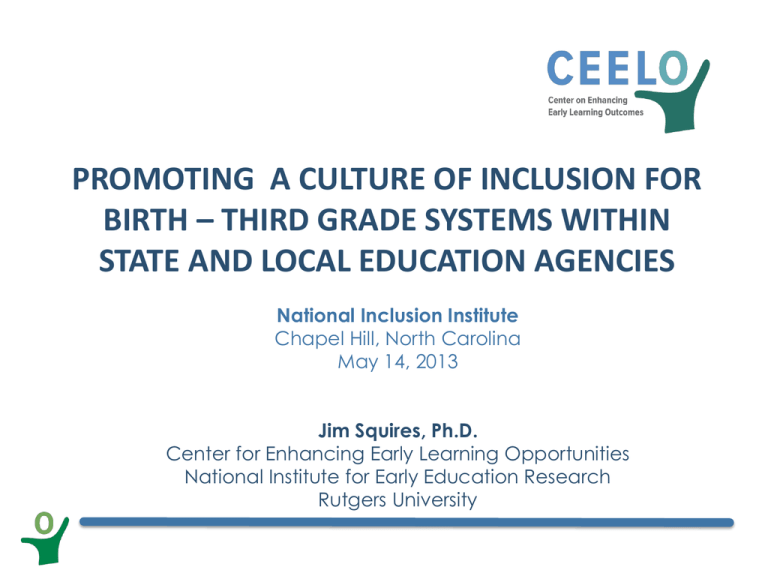
PROMOTING A CULTURE OF INCLUSION FOR BIRTH – THIRD GRADE SYSTEMS WITHIN STATE AND LOCAL EDUCATION AGENCIES National Inclusion Institute Chapel Hill, North Carolina May 14, 2013 Jim Squires, Ph.D. Center for Enhancing Early Learning Opportunities National Institute for Early Education Research Rutgers University Today’s Objectives Describe the current state of “an institutional culture of inclusion;” Identify real and perceived barriers to achieving an institutional culture of inclusion; Develop potential strategies to infuse a “viral culture of inclusion;” Suggest action steps and recommendations for technical assistance providers to SEAs, LEAs, and programs; and Take over the world with our thinking! Center on Enhancing Early Learning Outcomes | www.ceelo.org Learning Through Facilitated Discussion Share – Listen – Learn – Collaborate - Act Develop strategies to establish and maintain a B – 3rd grade culture of inclusion. Center on Enhancing Early Learning Outcomes | www.ceelo.org The Nature of Culture Culture reflects behavior. Think Feel Behave It is more difficult to change culture than to implement and improve programs. Put a good person in a challenged system, the system will win 90% of the time. Center on Enhancing Early Learning Outcomes | www.ceelo.org * What do you think about inclusion for Birth – 3rd Grade? * What do others think about inclusion for Birth – 3rd Grade? - Public - Families - SEA, LEA, and related agencies (we’ll get to them later) * How are B – 5 and K – 3rd similar and different in their cultures of inclusion? Center on Enhancing Early Learning Outcomes | www.ceelo.org Johari Window Joseph Luft & Harrington Ingham (1955) YOU Know Don’t Know Know THEM Don’t Know Center on Enhancing Early Learning Outcomes | www.ceelo.org Johari Window YOU Know Know Don’t Know Public Blind Private Potential THEM Don’t Know Center on Enhancing Early Learning Outcomes | www.ceelo.org INGREDIENTS FOR IMPROVEMENT VISION + SKILLS + INCENTIVE + RESOURCES + ACTION PLAN = IMPROVEMENT + SKILLS + INCENTIVE + RESOURCES + ACTION PLAN = CONFUSION + INCENTIVE + RESOURCES + ACTION PLAN = ANXIETY + RESOURCES + ACTION PLAN = SLOW CHANGE ACTION PLAN = FRUSTRATION = FALSE STARTS/ TREADMILL VISION + VISION + SKILLS + VISION + SKILLS + INCENTIVE + + VISION + SKILLS + INCENTIVE + RESOURCES + From Knoster, T. (1991). Enterprise Group Ltd. Center on Enhancing Early Learning Outcomes | www.ceelo.org SEA/LEA Culture of Inclusion What’s apparent? Attitudes Actions/Behavior Regulations Consequences What’s missing? Attitudes Actions/Behavior Regulations Consequences What are the barriers and drivers? Center on Enhancing Early Learning Outcomes | www.ceelo.org Inclusive School Culture “An inclusive culture starts from the premise that everyone in the school – students, educators, administrators, support staff and parents – should feel that they belong, realize their potential, and contribute to the life of the school. “An inclusive school culture requires a shift in the attitudes of all the stakeholders as well as the development of policies and practices that reinforce inclusive behaviour. Real inclusion is about actions, not just words. “An inclusive culture is based on the philosophy that the whole school shares in the responsibility for inclusion. “Creating an inclusive school culture is critical because our schools act as mirrors of the larger community. There is a great opportunity to teach students, early in their development as citizens, about the importance and value of inclusion. In an inclusive school culture diversity is embraced, learning supports are available and properly utilized, and flexible learning experiences focus on the individual student. . . At the heart of inclusion is committed leadership and a shared direction.” “An Inclusive School Culture” Ontario Community Inclusion Project of Community Living Ontario (CA) Center on Enhancing Early Learning Outcomes | www.ceelo.org A Culture of Inclusion Realized Seeing differences among students and staff as resources. Organizational features that supported teaming among staff. A collaborative interactional style among staff and children. Leadership that was shared and distributed among formal leaders and staff. A willingness to struggle to sustain inclusive practices. An understanding of the social/political nature of inclusion. The use of language and symbols to communicate ideals and spread commitments across the school and into the community. An uncompromising commitment and belief in inclusive education. Kugelmass, Judy. (2004).What is a Culture of Inclusion? Available at http://www.eenet.org.uk/resources/eenet_newsletter/news8/page14.php Center on Enhancing Early Learning Outcomes | www.ceelo.org Establishing a Viral Birth – 3rd Grade Culture of Inclusion What actions can be taken to ensure committed leadership and a shared direction by: SEAs LEAs Educators Families Others? What support is needed? Center on Enhancing Early Learning Outcomes | www.ceelo.org Three Stages of Truth All truth passes through three stages. First, it is ridiculed. Second, it is violently opposed. Third, it is accepted as being self-evident. Arthur Schopenhauer, German philosopher (1788 – 1860) Implementation Sustainability Culture Center on Enhancing Early Learning Outcomes | www.ceelo.org www.ceelo.org info@ceelo.org jsquires@nieer.org

